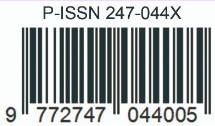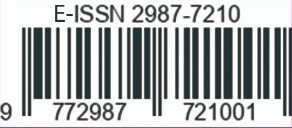AUTHOR GUIDELINES
Author Guidelines
Instructions for the Tambuleng: Jurnal Pendidikan Seni Dra, Tari, dan Musik Articles Contributors
- Articles written for Journal Tambuleng include the results of thought and research results in the field of education and learning. The manuscript is typed in Times New Roman, 12 pts (12 points), double spaced, printed on A4 paper, left margin 4 cm, right 3 cm, up and down 3 cm, as long as maximum 30 pages, and submitted in soft form -copy. The file (file) is created with Microsoft Word.
- The name of the article writer is listed without an academic degree and is placed under the title of the article. In the case of a script written by a team, the editor only deals with the primary author or author whose name is listed first. The author is recommended to include an e-mail address to facilitate communication.
- Articles are written in Indonesian or English in essay format. The article title is printed in capital letters, with a letter of 16 points. The section title rating is expressed by different font types (all section headings and sub-sections are bold or bold & italic), and do not use the numbered numbers in the section title:
- Title of Article(RANK 1) à ALL CAPITALS, THICKNESS, CENTER ALIGNMENT
- Chapter of Article (Rank 2) à ALL CAPITAL, Thick, Left Alignment
- sub-sectionof Article (Rank 3) à Uppercase Small, Bold and Italic, Left Alignment
- Systematic Manuscript of articles the result of thoughtare:
Manuscripts should be compiled in the following order: title, author's name (without academic degree); Abstract (in English, maximum 250 words); Keywords; introduction (containing the background and purpose or scope of the article); Literature Review (Optional); Method; Result and discussion; Tables and Figures; conclusion; references.
a. Title and Abstract.
The title and the abstract are key elements that inform the reader of the contents of the manuscript. A title will capture the reader’s attention and clearly inform the reader of the contents within.
The abstract should briefly describe the objectives of the research, the results achieved, and the major conclusions. You should give special emphasis to the novelty of your research. The abstract should not contain any undefined abbreviations references. Also avoid introductory remarks, details of the method (e.g. the method has been used for many decades successfully) or listing your results. Abstract should be ended with a comment about the importance of the results or conclusions brief. Abstract should not be more than 250 words, with 2-3 Keywords.
b. Introduction
Introduce the subject, summarize the fundamentals necessary to understand the paper, and define the problem. Discuss the latest publications in the same field in detail. State the objectives of your paper. The Introduction is NOT an extended version of the Abstract; never use the same sentences in both sections.
All citation references made in the publication text should be displayed as a list of references that follow the text. Manuscripts should be checked carefully to ensure that the quotation in the text is complete following the rules of JPE reference.
The references must be sorted by the order of reference in the text. Authors are advised to use a managerial reference application Mendeley or Zotero, etc.
c. Literature Review (Optional).
In reviewing the research literature, the author’s task is to indicate the main directions taken by workers in the area and the main issues of methodology and interpretation that have arisen. Particular attention must be given to a critical analysis of previous methodology and the exposition of the advantages and limitations inherent in various alternatives. Close attention must be given to conceptual and theoretical formulations that are explicit or implicit within the selected studies.
d. Method
The method of research is the procedure owned and done by researchers in order to collect information or data and investigate the data that has been obtained. The research method gives an overview of the research design which includes among others: the procedure or steps to be taken, the time of the research, the data source, and in what way the data is obtained and then processed and analyzed.
e. Result and Discussion.
The results section should include a summary of the collected data and analyses, which follows from the analytic plan. All results should be described, including unexpected findings. Authors should include both descriptive statistics and test of significance.
In the discussion session, the writers evaluate and interpret the findings. This section should begin with a statement of support or nonsupport for the original hypotheses in light of the findings. If the hypotheses were not supported, the author considers post hoc explanations. In interpreting the results, authors consider sources of bias and other threats to internal validity, imprecision of measures, overall number of tests, or overlap among tests, effect sizes, and other weaknesses of the study.
f. Conclusions
In Conclusions you should not repeat sentences from the Abstract, Introduction, and the Results sections. It should summarize the most important results, their novelty advantages, and limitations. Here you may also mention planned future work and/or recommendations to others.
g. Tables and Figures.
Table and figures are particularly valuable for conveying large amounts of information and for showing relationships among data. However, tables and figures should be kept to a minimum and contain only essential data. All diagrams, charts, and graphs should be referred to as figures. It is the authors’ responsibility to make sure to obtain permissions to display tables and figures from third parties..
h. Reference
- The reference is cultivated for the most recent issue of the last ten years with the number of primary libraries of at least ten libraries. The sources are written in accordance with the style (style) issued by APA (American Psychological Association). The APA reference system (www.apastyle.org), that is using the last name of the author(s), the date of publication and, following quoted material. Please ensure that dates, spelling, and title used in the text are consistent with those listed in the references. Please use Reference Manager Applications like EndNote, Mendeley, Zotero, etc.
- Referral sources are as much as possible libraries of the last 10 years. The preferred references are the primary sources of research articles in journals and/ or scientific magazines. That’s sorted alphabetically and chronologically.
- The references should be arranged alphabetically by the author's last name/ source by author's name, year of publication, book title, issue (Vol., No., p.), Publisher and publisher city, spaces 1 and 6 pt thereafter, like the some following examples:
Books:
Creswell, John W (1998) Qualitative Inquiry and Research Design, Choosing Among Five Traditions. California: Sage Publication.
Journal article:
Hardinto, Prih (2017) Factors Affecting Students in Choosing Community Economy in Development Economics Program, Universitas Negeri Malang. International Journal of Economic Research (IJER), 14(6), 71-79
Light, M. A., & Light, I. H. (2008). The geographic expansion of Mexican immigration in the United States and its implications for local law enforcement. Law Enforcement Executive Forum Journal, 8, 73–82.
Handayani, S., Nasikh., & Annisya’ (2017) Peningkatan Kinerja Guru Melalui Kegiatan Pelatihan Penyusunan Proposal Penelitian Tindakan Kelas (PTK) (Studi Kasus Pada Guru–Guru Ekonomi di Kabupaten Malang. [Improved teacher performance through training of development classroom action research proposal (case study in economic teachers in malang regency)]. Jurnal Pendidikan Ekonomi, 1(1), 43-57.
Journal Online Sources style:
- J. Vidmar. (1992). On the use of atmospheric plasmas as electromagnetic reflectors. IEEE Trans. Plasma Sci. [Online]. 21(3). pp. 876-880. Available: http://www.halcyon.com/pub/journals/21ps03-vidmar
Proceedings:
Witjaksono, Mit (2016, March) Analisis Kebutuhan Pembelajaran Ekonomi Sesuai Pasal 33 UUD 1945. Prosiding National Conference On Economic Education: 1, 459-470. Malang: Universitas Negeri Malang
Antonioli, G. E. (Ed.). (1997, September). Pacemaker leads 1997. Proceedings of the 3rd international symposium on pacemaker leads, Ferrara, Italy. Bologna: Monducci Editore.
Callaos, N., Margenstern, M., Zhang, J., Castillo, O., Doberkat, E. E. (Eds.). (2003, July). SCI 2003. Proceedings of the 7th world multiconference on systemics, cybernetics and informatics, Orlando, FL. Orlando, FL: International Institute of Informatics and Systematics.
Newspaper article
Brummitt, C. (2016, May 16). This Asian Lets You Borrow Cash and Pay in Trash. Retrieved from https://www.bloomberg.com
Newspaper article-without an author
Internet Pioner to oversee network redesign. (2017, March 7). Waste Bank Cut Down Trash Volume in Central Jakarta. Retrieved from http://www.thejakartapost.com
Working Paper
Lusardi, A., & Tufano, P. (2009). Debt literacy, financial experience, and overindebtedness. NBER Working Paper 14808.
Thesis or Dissertation
Yunikawati, N.A. (2012). Pengaruh Status Sosial Ekonomi Orang Tua, Pendidikan Ekonomi Keluarga, Terhadap Financial Literacy dan Gaya Hidup serta Dampaknya Pada Rasionalitas Konsumsi (Survei Pada Mahasiswa S1 Pendidikan FE UM) (Unpublished Thesis), Universitas Negeri Malang, Indonesia
Ritzmann, R. E. (1974). The snapping mechanism of Alpheid shrimp (Unpublished doctoral dissertation). University of Virginia, Charlottesville, VA.
Adams, R. J. (1973). Building a foundation for evaluation of instruction in higher education and continuing education (Doctoral dissertation). Retrieved from http://www.ohiolink.edu/etd/
Search more at:
- http://www.apastyle.org/manual/index.aspx
- https://www.uvic.ca/library/research/citation/documents/APA%20Style%20Guide%2024_Sept_%202014_8%20pages.pdf
- http://www.tandf.co.uk/journals/authors/style/reference/tf_APA.pdf











